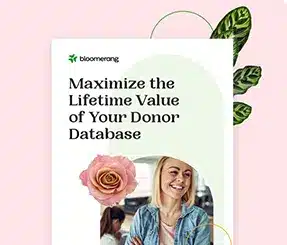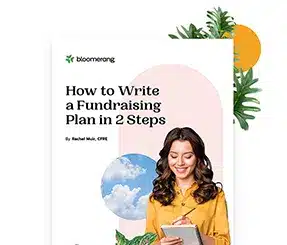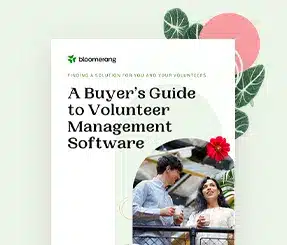Top Tactical Tips To Flip “NO” To “ON”


Full Platform Overview Chat With Us



Full Platform Overview Chat With Us




In “No” Can Be the Beginning, Not the End of the Philanthropic Conversation, I cautioned fundraisers to avoid taking a “no” personally. It’s not a rejection of you. It just means the donor is not quite ready to say “yes” to your organization’s ask – for any number of reasons that make perfect sense.
It’s your job to gently tease out these reasons and keep the conversation going. This makes the donor feel good (you show you’re interested in them). Plus, it helps you learn more so you can connect on a deeper level (and then they’ll become more interested in you). After all, the foundation of sustainable fundraising is building strong relationships.
You see, the A, B, C of effective philanthropy facilitation is not “Always Be Closing.” It’s “Attunement, Buoyancy and Clarity.” By listening, creating a generous space for the donor, staying positive as you endeavor to lift the donor up by meeting their needs, and getting clarity on the donor’s hopes and fears, you’ll be able to advance their journey.
The business of encouraging people to part with their money to solve some of the world’s most pressing problems takes some finesse.
It’s not hard. It’s just something few of us are taught to do. First and foremost, stay true to your role as a facilitator. Your role is to guide, advise, and make the process comfortable and easy for the donor.
The philanthropy facilitator’s job is to identify and solve the problem standing in the way of a gift.
Here are some helpful tactics I’ve used, many borrowed from other seasoned fundraisers.
After you ask, give the donor space to consider, reflect, and answer. Don’t jump in to fill the void. They may not simply say “no.” They might say “No, I’m not sure.” Or “no, this is a big amount.” Give them some leeway to explain further.
Let them know you heard them. For example, if the amount is the issue you might say “Yes, I understand this is a big consideration.” Or you might try “I know. This is the biggest campaign we’ve ever had. Others are making the largest gifts they’ve ever made (I certainly did).” If they express an interest in having you come back once you’ve secured other “leadership” gifts, consider saying “I know this is a big challenge. I wouldn’t ask, except we need a strong woman leader for this project.” Or try “Your leadership here can make or break the project, because people really look to you as a role model.” Or maybe just “I can appreciate that.” The ensuing silence will encourage many people to talk. So, before rushing in with a smaller ask, see what they have to say.
As a philanthropic facilitator, you want to guide this person to what’s next for them on their donor journey. Try “I appreciate your consideration, and I hear you. May I ask you a question?” The donor doesn’t owe you a response. Which is why it’s so important to ask for permission before making a request. Then, when they answer affirmatively, you’re already in the process of flipping the script from “no” to the big ask to “yes” to sequential, smaller asks. This can change the potential donor’s mood from hesitation to acceptance.
Once you know the donor prospect still identifies with your organization’s vision, mission, and values, take a minute to praise them and confirm you’re in this together. Try “You’ve been such a committed supporter. I’m so glad you’re still on board, as I know this (goal) is so important to you.” This reminds them of the journey they’re on, and how meaningful it has been (to you and to them).
If they’re on it, how might you tip them over to the right side? You’ve listened; now it’s time to ask the four questions and other open-ended generative, directional questions that clarify the donor’s thinking. Work together, focusing on points of agreement, to get to a win/win. Try “I understand this isn’t the best timing. When would be a better time to begin discussing your next gift?” Or, “You indicated this project doesn’t interest you much. When might we discuss some other projects that may better match your interests?”
Make sure there’s just one barrier holding the donor back at this point in time. When you do this, the “no” answer becomes a contingent “yes.” Try “It sounds like it’s a big ask for you, but you’d like to make it happen if possible. Am I right?”
Once the barrier can be clearly seen, it’s time to knock it down. If it was the amount of the ask, you might offer giving options they may not have considered. This could be pledge payments over time, or a gift from their donor advised fund, an IRA rollover, a gift of appreciated stocks or property, or even a crypto gift. It’s not uncommon for donors to react as if the only way they can give is from their income. When they give from their assets they often find they can make larger gifts, without impacting their lifestyle. If the fence was the project, this is the time to offer alternatives.
This empathic technique shows you understand how the donor feels, you (or others) have also felt this way, and there’s a way you’ve found to get around the problem. It goes like this: “I feel your pain.” What’s the most important part of what’s troubling you right now? “I’ve felt that way myself.” Tell me a bit about what you’re finding now. “I’ve found that…” Is there anything that might shift your feeling? What would your dream be? Then, you can offer an alternative way to think about the situation. This might be finding a different project or suggesting a different way to give. Again, ask permission. “Would you be okay with me showing you how this might be done?”
Know in advance what your desired outcome is from the conversation, and make it expansive. Is it just an in-the-moment “yes.”? Or is it to explore and learn more about what would also work for the prospective donor? There’s a difference between being “salesy” and being genuinely curious and human. Think about how you want to show up emotionally and energetically. Consider how you want someone to feel when they walk away from the meeting. Russell James holds you want them to accomplish a heroic victory, not just settle for a “pat on the head” gift. So, if you go in seeking a $10,000 gift, and they offer $1,000, don’t just immediately concede. It won’t be sufficient to accomplish your objectives, nor will it make the donor feel they’ve made a meaningful, transformational gift that solidifies their identity as a philanthropist (aka “lover of humanity”).
Even if you end up with a hard “no,” you can still advance the donor’s journey by making them feel valued. Speak to their identity and values. Let them know how appreciative you are. Suggest how you look forward to the next time you’ll see each other (maybe it’s an upcoming event). Finally, use this little “trick:” Ask for a referral to someone else they know who you should meet. This could be a prospective donor or volunteer, an expert in the area you’ve been discussing, or a community leader who might help advance your mission or introduce you to their network. They don’t have to join you on a visit, but maybe they’d be willing to make a mutual email introduction. Even though they said “no” to the gift, they’re saying “yes” to the favor. This makes them feel helpful.
Your job is to embrace your role as a philanthropy guide. Whenever your donor raises an objection to giving at any particular point in time, join them where they are, show them empathy and understanding, and move on gently from there – slowly building a harmonious relationship. This enables you and your donor to make beautiful music. Together.
It’s all part of the process.
Become a passionate philanthropy facilitator and you’ll become much more than a forgettable fundraiser. Your meaningful work will live on as a legacy.
Comments